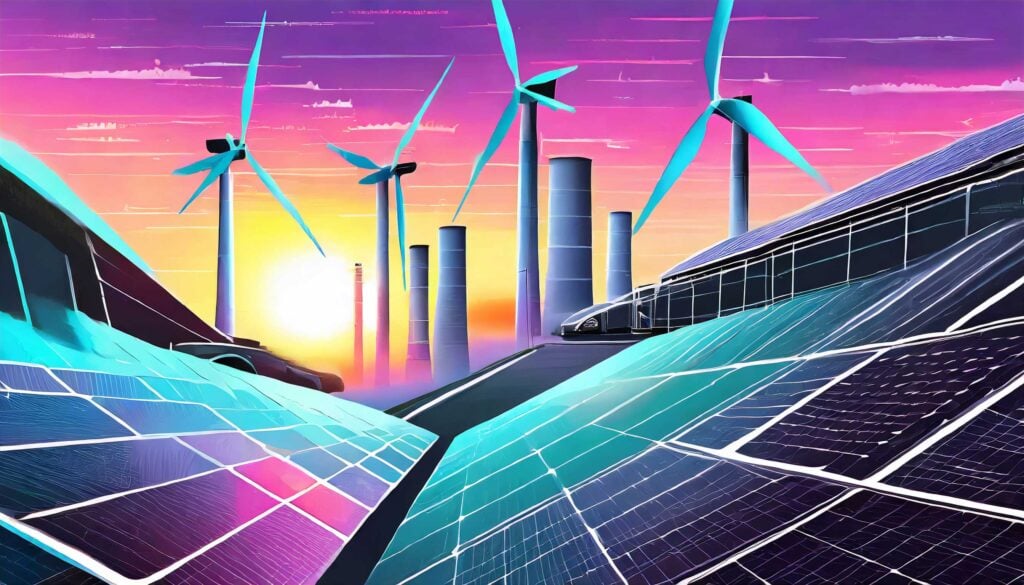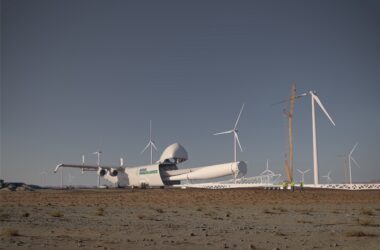The rapid growth of renewable energy and electric vehicles shows a clear trend toward reduced fossil fuel dependence, according to the International Energy Agency’s (IEA) World Energy Outlook 2023.
However, while the report predicts peaking carbon emissions within years, challenges remain to reach stated climate goals.
The IEA’s annual report provides an authoritative global perspective on the status of the energy transition. This year’s findings highlight exponential expansion in key green technologies while projecting an imminent decline in oil, gas, and coal demand.
Declining Fossil Fuel Demand and Peaking Emissions

The data reveals a dramatic shift in energy investment from fossil fuels toward renewables like solar and wind. Clean energy spending has risen 40% since 2020, overtaking fossil fuel investment in 2022. Momentum continues building, with installations of solar panels and wind turbines set to break annual records.
As a result, the IEA forecasts global oil, gas, and coal demand will peak before 2030. Oil and gas are projected to remain at high levels, but the era of growth for these fuels is ending. Specifically, coal use enters a structural decline this decade, with consumption dropping 15% by 2030.
This falling fossil fuel appetite, combined with clean energy deployment, leads to a peak in carbon dioxide emissions from the energy sector around 2025. The milestone suggests the world could bend the emissions curve consistent with climate goals. However, continued high emissions after the peak would still lead to severe planetary warming.
Exponential Growth in Renewables and Electric Vehicles
Solar photovoltaics and electric vehicles show fast growth. The report reveals that 40% of all installed solar panels came online in the last two years. Manufacturing capacity vastly outpaces demand, meaning ample supply exists to accelerate solar’s role dramatically.
The transition is also charging ahead in transportation. Electric vehicles jumped from one in 25 car sales in 2020 to one in five today. With supportive policies, EVs could represent half of new car sales by the end of this decade.
Overall, renewables are on track to generate half the world’s electricity by 2030, up from 30% today. The IEA found solar alone could produce more power in 2030 than the entire U.S. grid. As costs fall further, economics continue shifting decisively toward clean energy.
Challenges Remaining to Reach Net-Zero Goals
However, the report emphasizes the world remains far off course from stated climate ambitions like net zero emissions. Current policies align with approximately 2.4°C of warming rather than the 1.5°C target. Changing that curve further requires addressing many challenges.
First, renewables adoption is expanding but must accelerate. With solar, just 40% of panels being manufactured are installed each year. More infrastructure and incentives can boost utilization and displace additional fossil fuel generation.
Second, while supply chains for materials like lithium and cobalt ramp up, production may need to catch up to demand. The concentration of manufacturing in China also risks supply interruptions from geopolitics or disasters. Diversification and recycling can improve critical mineral resilience.
Third, tensions between the West and China—which dominate industries like solar panels and EV batteries—threaten trade flows. Tariffs could hamper technology uptake, and collaboration is vital for continued innovation.
Finally, rising energy demand in developing nations needs sustainable solutions. Investment in renewables across Southeast Asia, Africa, and Latin America must increase five-fold by 2030 to support economic growth without fueling emissions.
Collaboration and Investment
The report underscores that, while challenging, a 1.5°C pathway remains achievable with concerted action. Realizing further gains requires policy, financing, and global cooperation.
Specifically, the IEA proposes increasing renewable capacity three-fold, doubling energy efficiency improvements, cutting methane emissions, and ending new coal plant approvals. International funding mechanisms are also critical to assist emerging economies.
With innovative strategies, the world can utilize the achievements to date as a foundation for further climate progress. But delayed action or fragmented policies endanger the narrowing window to secure a livable climate future. Choices in the next decisive years will determine whether nations can collectively peak emissions and rapidly decline their carbon footprints.
The renewable energy boom has put net zero within reach. The race is now on to accelerate the transition before time runs out.
- IEA report shows renewable energy and electric vehicles surging exponentially
- Fossil fuel demand will peak by 2030, with emissions peaking in the mid-2020s
- But the current pace is too slow to reach climate goals like a 1.5C warming limit
- Key challenges: faster renewable adoption, supply chain risks, geopolitics, emerging economy investment needs
- Collaborative action and financing required to accelerate progress







